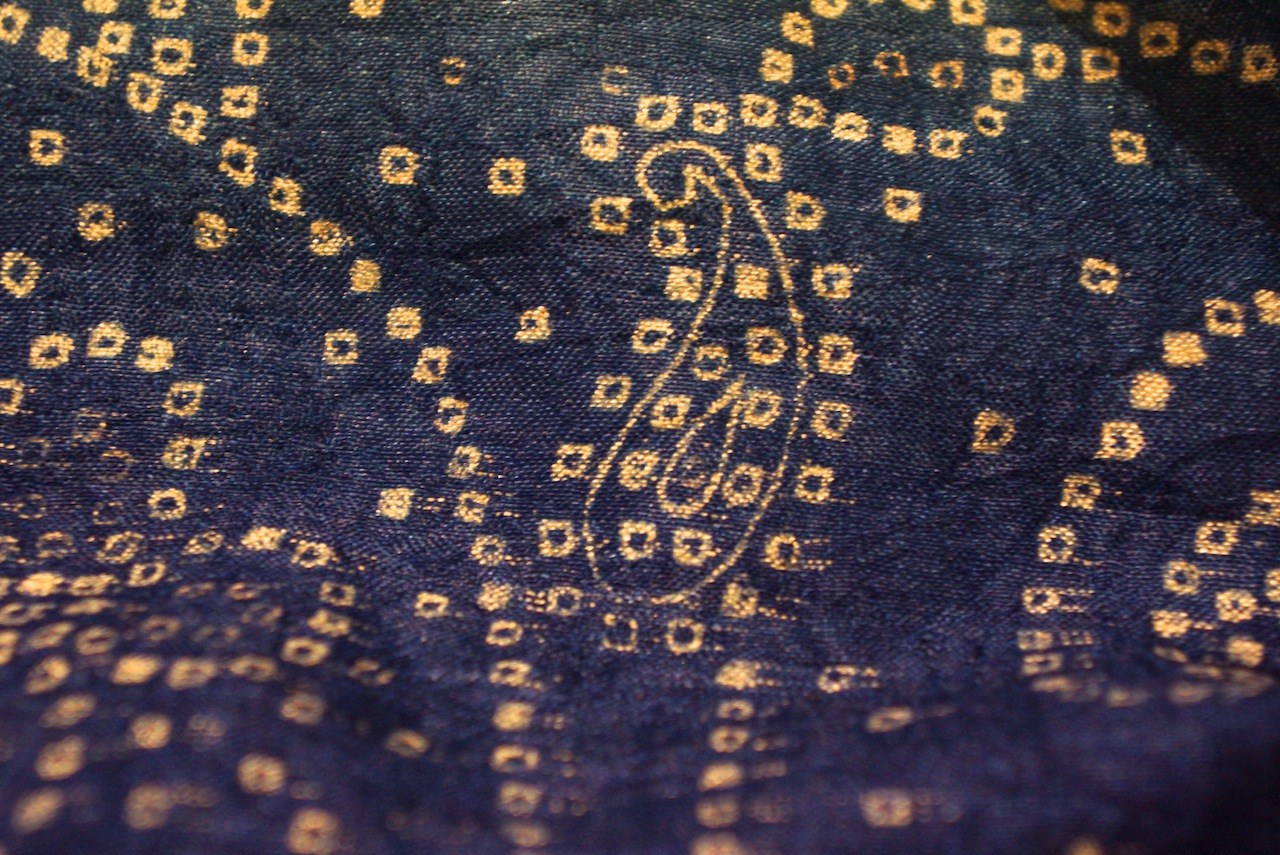
On my desk is a simple cardboard box filled with wonderful things.
Natural dyes and mordants. Cochineal, Black Henna, Indigo and a small laboratory of fixative chemicals. Beside these, a pile of silk and cotton lengths and a well loved wrap skirt made of old saree fabrics patterned with Bandhani ( an Indian technique of tie-dye). These materials sit in waiting for a fantastic program we are running next weekend in association with our East of India exhibition- from Bengal to Bandhani- a talk and textile workshop with renowned artist Liz Williamson.

Bandhani (Indian tie dye) saree fabric
As a fine arts textiles student in years gone by, I used to spend much of my time thinking about the significance and stories of cloth. There are so many fascinating stories behind Bandhani textiles. Traditionally you could identify a person’s community affiliations from the patterns of Bandhani on their turban or saree. The colour of the dyes could indicate a bride (reds) or a new mother (yellows). A short tie-dyed silk length known as a bandana (also derived from the word bandhnu or banda- “to tie”) from Bengal was an incredibly popular export in the 1700s, worn around the neck, it became a quintessential clothing item for sailors and labourers. In our workshop we will explore many such stories behind Indian textiles, Bandhani, and natural dyes as we make our own silk and cotton resist dye scarves.

Bandhani (Indian tie dye) saree fabric
Techniques such as Bandhani and mordant dyeing were actually what made India one of the most technically advanced textile producers in the world during the 18th Century. Bandhani has been practiced for at least 5000 years making it one of the oldest techniques still in use. When the East India Company first sent decorative textile goods from India back to England, they were considered incidental to the lucrative trade of silk and spices. However the popularity of these vibrantly coloured and intricately patterned fabrics soon made India the greatest exporter of textiles ever known at the height of their trade in the 18th and 19th centuries. The colonial cloth trade with India had an indelible influence on textile history, so much so that these traditional fabrics continue to inspire and be integrated into contemporary design.

Woven in Asia’ Silk scarves, designed by Liz Williamson and woven in West Bengal. 2010 to 2012. Photo Ian Hobbs.
For our workshop facilitator Liz Williamson, her relationship with India is more than just a historical, academic or artistic appreciation. Rather it involves a longstanding involvement with cultural development projects in the region including assisting artisan groups in developing sustainable production models. For many years she has worked with a weavers group in East Bengal who produce her Woven in Asia series. More recently she taught a cultural textiles course to students from UNSW COFA and students at the National Institute of Design in Gujarat, India that focused on understanding how contemporary designers can work with artisan groups( community, NGO and family based) in producing handmade textiles with marketable and sustainable designs that combine tradition and contemporary influences.
